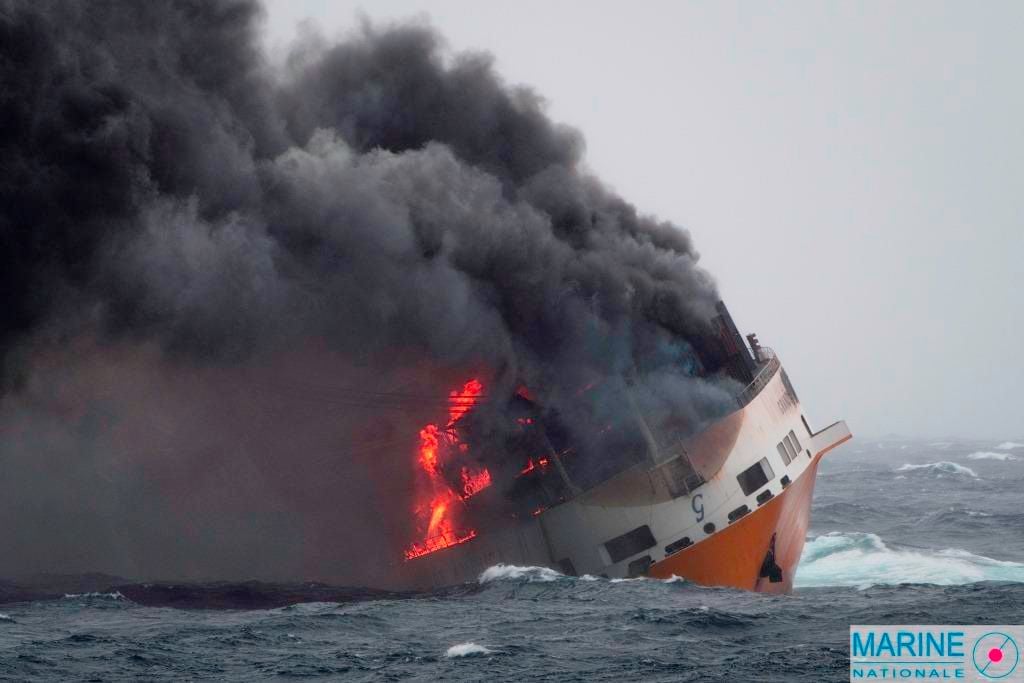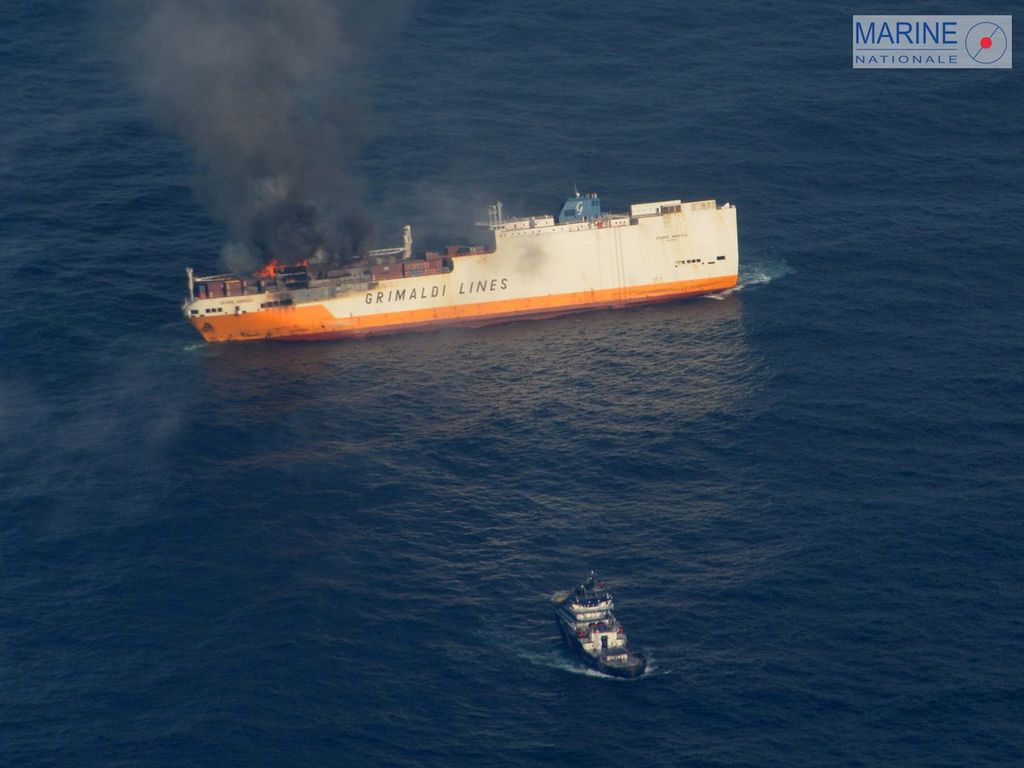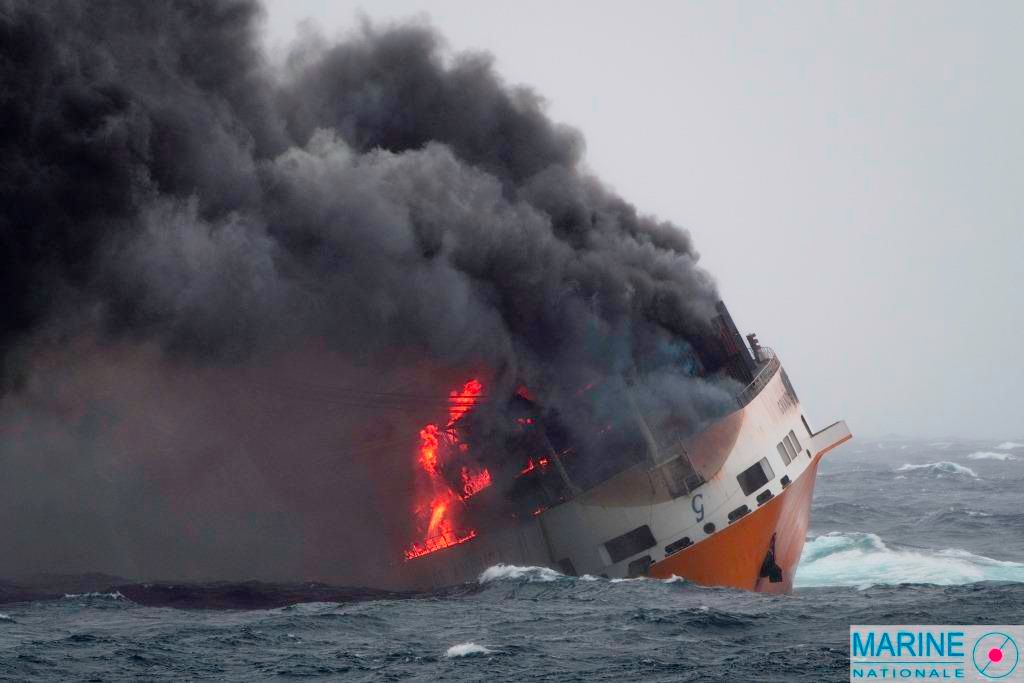
Are we on the verge of an ecological disaster? The concern is real since the sinking of the ship flying the Italian flag, the “Grande America”, Tuesday afternoon more than 300 km from the Atlantic coast. It sank 4600 meters deep, with its cargo made up of more than 2,000 cars and 365 containers, 45 of which are listed as containing hazardous materials. Moreover, he had in his holds something 2,200 tonnes of heavy fuel oil which was the propulsion fuel. If the ship’s cargo sank with it, fuel is for its part spreading in the Bay of Biscay, raising fears of an imminent risk of maritime pollution.
Two layers 9 and 13 km long by 7 km wide
The maritime prefecture of the Atlantic announced Thursday afternoon the location of two oil slicks of 63 km² and 91 km² near the site of the sinking of the Grande America. Driven by prevailing winds from the westerly sector blowing between 60 and 80 km/h and a strong swell from the west to northwest sector with waves reaching 5 to 6 meters, they move towards the coast at an average of 1 to 2 km/h. Thereby, the arrival of the slicks and their residues is expected between the middle of next week at the latest. The coasts of Charente-Maritime and Gironde are likely to be the most affected, the south of Vendée and the Landes coast could also be affected.
Doubts remain, however, about the quantities that have spilled into the ocean and whether this fuel oil will continue to escape from the ship over the next few days. Likewise, some 100 tons of drums of hydrochloric acid and 70 tons of sulfuric acid make up the cargo. If they were to flow into the Bay of Biscay, the pollution would remain very localized so much the quantity of acid is “tiny” compared to the volume of the ocean. The consequences on the ecosystem will thus be much more limited than those of fuel oil on the fauna and flora..

High tides next week
Another concern concerns the high tides which are expected next week. with coefficients above 100 from Wednesday and which will reach 115 on Friday. These equinox tides will result in waves and movements on the surface and at depth that are much greater than normal, which will contribute to the dispersion of the fuel oil slick.. Thus, the quantities of fuel oil in a given location will be lower but the geographical area affected by the pollution will be much larger.
If the sea state will remain degraded next week, on the other hand, the weather conditions will improve with a wind weakening significantly compared to the last few days and no longer exceeding 40 km/h in gusts. With the return of the anticyclone over the country, the wind will even turn to the northeast sector, a direction much more favorable for our coasts.
– .


